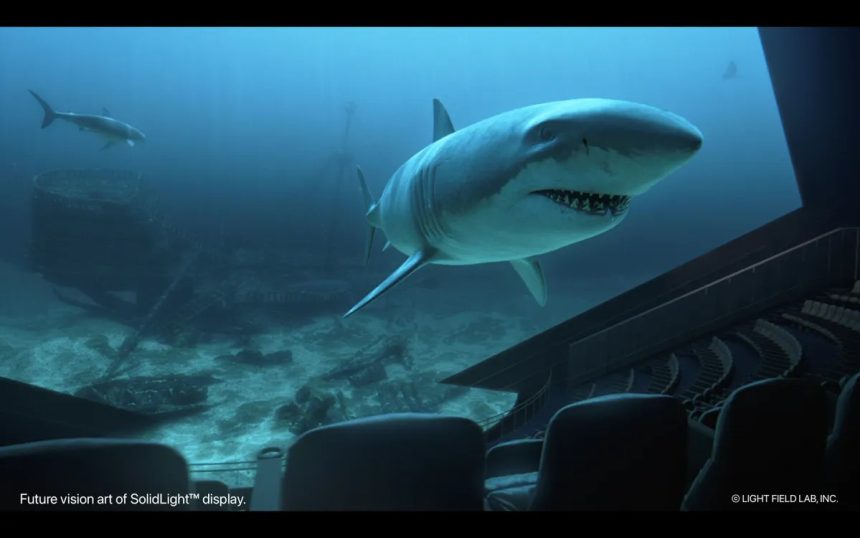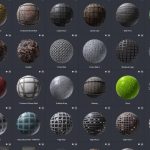The room envelops in darkness, accompanied by the gentle hum of fans. Unseen speakers emanate nature sounds, while artificial greenery adorns one wall. Amidst this ambiance, a peculiar sight captures attention—an angular head, glowing in hues of blue and purple, suspended in the air. Despite the absence of a visible screen, the head appears as if projected onto one.
Unexpectedly, the head begins to speak. A resounding voice resonates through the speakers, offering a greeting followed by witty banter. Intriguingly, the luminous disembodied head tracks my movements, with its eyes following and its mouth synchronized with its words. Undoubtedly, it is a remarkable holographic creation.
Light Field Lab, a company previously explored , continues to advance its holographic technology, exemplified by this conversing head. Not only does it possess a heightened realism, but it also interacts and moves in real time. Could this be a glimpse into the future of visual entertainment? Let us delve into our discoveries.

Faces brought to life with light
Before delving further, let’s take a step back and discuss holograms. Many technologies claim to be holograms, although they fall short of the true definition. Several years ago, a tech company made headlines with a “hologram” of Tupac on tour, which was essentially an updated version of the Pepper’s Ghost effect dating back to the 1800s—an effect even showcased in Disney’s Haunted Mansion.
Then there are autostereoscopic “glasses-free” 3D displays and spinning LED wheels, both of which are not genuine holograms. Authentic holograms are those peculiarly colored 3D objects and images. However, their creation and viewing methods are not conducive to high-resolution motion video.
Light Field Lab diverges from these technologies by employing billions of pixels and microscopic tech to facilitate the interaction of light beams. The result, to the human eye, is the perception of objects suspended in space. By combining multiple custom modules, Light Field Lab envisions the possibility of creating wall-sized holograms that seemingly extend into our physical realm.
For a more detailed explanation of this technology, refer to our original report titled “Holograms get real: Startup creates objects out of light and thin air.”

Engaging through holographic interaction
Capturing the three-dimensional essence of holograms in pictures or videos remains a daunting task. However, having witnessed it in person, I can attest to its immense impressiveness. Regrettably, the scale is still limited. The talking head I conversed with did not match the size of a full-sized head. Nonetheless, the fact remains—it was a talking, floating head!
Initially, Light Field Lab attempted to convince us that an advanced, interactive AI powered the vibrant head. However, I grew skeptical when it posed a question about the spelling of my name, distinguishing between a “G” and a “J.” Such intricacy seemed beyond the realm of a computer. Nevertheless, the interaction was an entirely convincing ruse.
The actual method employed is even more remarkable, in my opinion. In another area of the building, an employee of Light Field Lab had their face scanned and transformed into the colorful noggin we beheld, all in real time. This process utilized Wi-Fi connectivity, although it could function over various internet connections. Imagine engaging in a FaceTime conversation with a life-sized, three-dimensional hologram of your mother, standing right in your room. Hopefully, she won’t be able to discern the messiness of your surroundings.

A holographic horizon
The widespread adoption of such holograms as a mainstream technology is still several years away. One reason is the pixel density of these modules, which surpasses that of typical displays by an order of magnitude. While a








